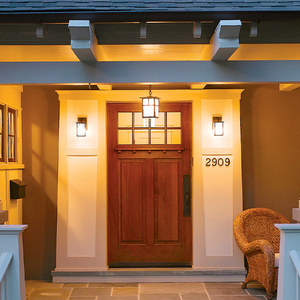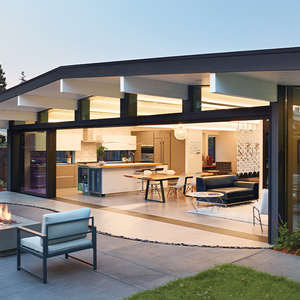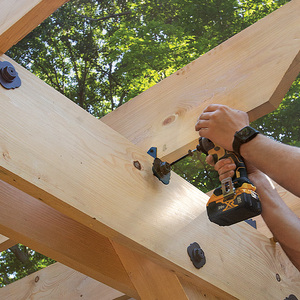*
It occurred to me as I researched concrete slabs in the Breaktime archives and elsewhere that there may be two different situations involved. Maybe it’s obvious to most of you, but it wasn’t to me.
I’ve seen several articles that discuss the Scandinavian frost protected slab arrangement. I’ve also seen several arguing the merits of floating slabs for, among other things, garage slabs. I pretty much thought of them as behaving the same, but perhaps I was wrong.
Isn’t the theory behind the frost-protected slab that the ground never freezes underneath it, because of the perimeter rigid foam and the heat from above the slab (in the house)? It seems that this wouldn’t work in a stand-alone garage because most of the time the air above the slab would be the same temp as the outside air. And it might be worse, because of a lack of snow insulation, etc.
Is the floating slab method simply to minimize accumulation of water under the slab, and to make the slab sturdy enough to survive any remaining movement? So that the ground under the slab is generally frozen in the winter?
I’m embarking on rebuilding a collapsed garage and want to get the foundation right before getting ambitious with the rest of it. I want to use half of the garage for a workshop, but I’m concerned about the temperature swings. I’m afraid that the coldness of the slab will result in a lot of tool rusting, especially in the spring when warm moist air fills the garage while all the stationary tools are cold from contact with the floor. Has anyone tried building a raised floor using sleepers and plywood to create a thermal break from the slab?
Thanks,
Brian



















Replies
*
It occurred to me as I researched concrete slabs in the Breaktime archives and elsewhere that there may be two different situations involved. Maybe it's obvious to most of you, but it wasn't to me.
I've seen several articles that discuss the Scandinavian frost protected slab arrangement. I've also seen several arguing the merits of floating slabs for, among other things, garage slabs. I pretty much thought of them as behaving the same, but perhaps I was wrong.
Isn't the theory behind the frost-protected slab that the ground never freezes underneath it, because of the perimeter rigid foam and the heat from above the slab (in the house)? It seems that this wouldn't work in a stand-alone garage because most of the time the air above the slab would be the same temp as the outside air. And it might be worse, because of a lack of snow insulation, etc.
Is the floating slab method simply to minimize accumulation of water under the slab, and to make the slab sturdy enough to survive any remaining movement? So that the ground under the slab is generally frozen in the winter?
I'm embarking on rebuilding a collapsed garage and want to get the foundation right before getting ambitious with the rest of it. I want to use half of the garage for a workshop, but I'm concerned about the temperature swings. I'm afraid that the coldness of the slab will result in a lot of tool rusting, especially in the spring when warm moist air fills the garage while all the stationary tools are cold from contact with the floor. Has anyone tried building a raised floor using sleepers and plywood to create a thermal break from the slab?
Thanks,
Brian